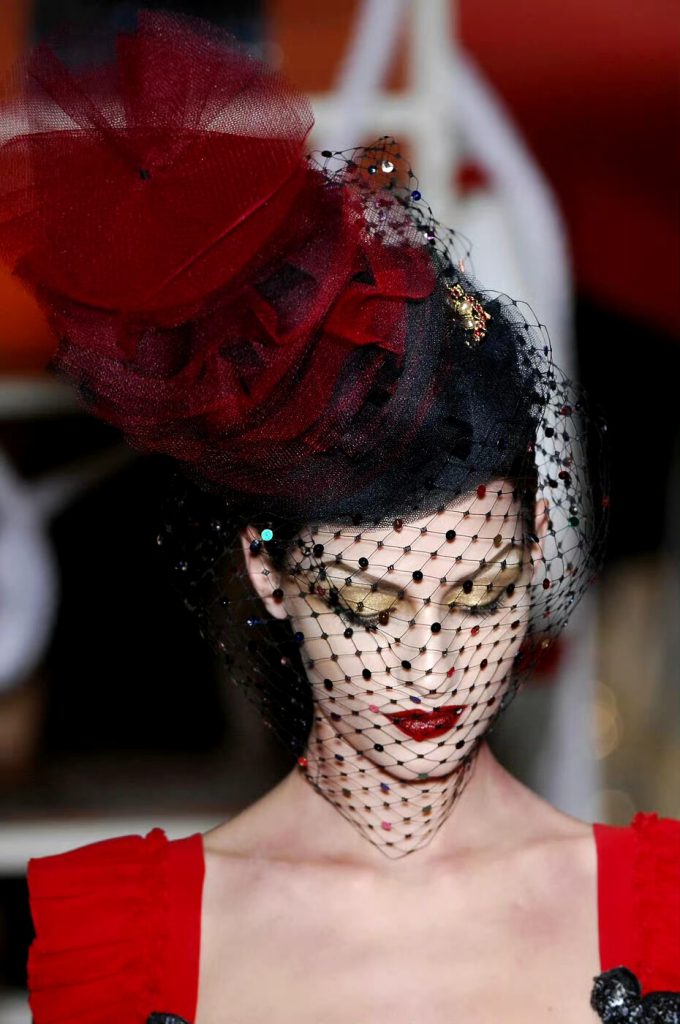
The decorative design of the veil can be flexibly matched according to the occasion, cultural background, and personal style. The following are common decorative elements and applicable scenarios:
1、 Classic decoration type
- Embroidery
Form: Handmade or machine embroidered patterns (such as vines, geometric patterns, flowers, etc.).
Style: Chinese wedding veils often feature gold thread embroidery, while European retro styles favor lace edge embroidery.
Scene: Wedding, traditional ceremony, ethnic costume matching. - Beads and sequins
Form: Sewing pearls, crystals, beads or sequins, which can form patterns or embellish edges.
Style: Luxurious wedding veil, Middle Eastern style veil with common dense bead decoration; Small particle sequins are suitable for low-key daily decoration.
Tip: Avoid being too heavy and choose lightweight materials (such as resin beads). - Lace overlay
Form: Splicing lace or covering the entire veil.
Style: Victorian retro style, iconic decoration of Spanish Mantilla veil.
Suggestion: The lace color should be coordinated with the base color of the veil (such as ivory white with beige). - Water diamonds and metal decorations
Form: Inlaid rhinestone chain or metal patch.
Style: Bohemian style, modern fashion styling, suitable for parties or stage performances.
Attention: Metal materials should be resistant to oxidation to avoid scratching the skin.
2、 Creativity and Natural Elements - Feather decoration
Form: embellished with ostrich feathers, peacock feathers, etc.
Scene: masquerade ball, art photography, adding agility 5.
Limitations: Easy to deform, avoid humid environments. - Flower decoration
Real flowers: Fresh roses and starry sky are commonly used in weddings, which need to be firmly fixed and used briefly.
Artificial flowers: Silk or fabric flowers, reusable, suitable for daily use or forest style. - Tassel and tassel
Form: Add short tassels or long tassels to the edge of the veil.
Cultural Connection: Common Elements of North African Berber Veils and Indian Traditional Headbands.
Matching: Suitable for cotton and linen materials, creating a national style. - Three dimensional decals
Form: Three dimensional fabric decorations such as butterflies and leaves.
Style: Fairy tale themed wedding, children’s festival styling.
3、 Cultural characteristic decoration
Typical Decorative Features of Culture/Region
Middle Eastern style metal chains and gold coin ornaments symbolize wealth and identity
The traditional Indian bead chain, Tikka, and sari complement each other with vibrant colors
Mantilla from Spain combines black lace edges, comb fixation, religious rituals, and classical elegance
Bohemian style woven knots and natural stone string decorations are free and romantic, suitable for outdoor weddings
4、 Matching suggestions and precautions
Material matching
Silk/satin: suitable for bead decoration and embroidery, avoiding the damage of heavy decoration and sagging feeling.
Cotton and linen/chiffon: can be stacked with tassels and fabric patches to maintain a natural feel.
Suitable match for the venue
Wedding: Pearls, rhinestones, lace (to match the style of the wedding dress).
Daily: Simple embroidery, small sequins or solid color without decoration.
Religious ceremony: Following traditional symbols such as cross stitch and text hot stamping.
Fixed method
Use invisible hair clips, combs, or headbands to secure decorative areas and avoid pulling the veil.
Heavy decoration requires scattered sewing to prevent local tearing.
Seasons and Practicality
Summer: Reduce metal decorations to avoid heat absorption; Adding plush elements in winter.
Frequently used veils should prioritize wear-resistant materials such as scratch resistant sequins.
